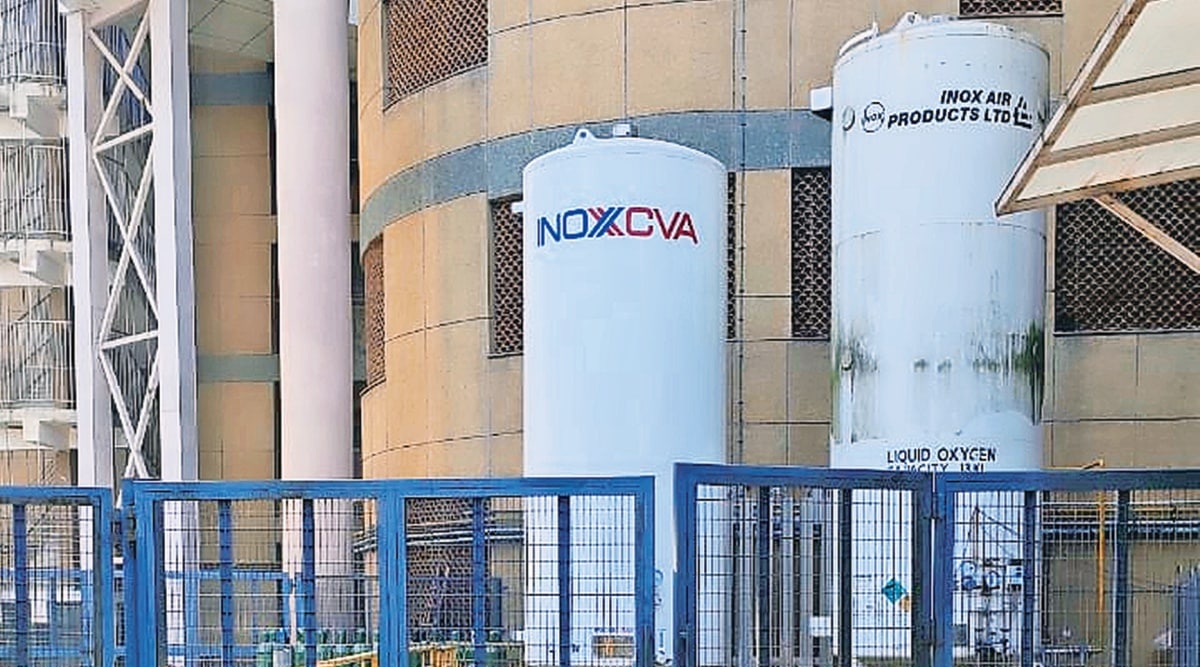 The centre had also added an additional oxygen storage tank before the 2nd wave that helped it manage more patients.
The centre had also added an additional oxygen storage tank before the 2nd wave that helped it manage more patients. When patients of road accidents, falls, and severe injuries return to the standalone Jai Prakash Narayan Apex Trauma Centre (JPNATC) run by the All India Institute of Medical Sciences, they will find updated infrastructure and faster turnaround time thanks to the complete overhaul of the emergency department during the three Covid waves.
Amid the pandemic, the centre started two more intensive care units and added piped oxygen supply to several wards.
The JPNATC, located behind Safdarjung Hospital across from the main AIIMS campus, was designated as a separate Covid-19 centre in March 2020 when the pandemic had just begun in India. All trauma services were moved to the main campus, reducing beds and ventilators available for trauma patients. The centre kept treating Covid patients through the second wave and trauma services were resumed only in November 2021. In January, the centre was shifted back to the main campus when the heavily mutated omicron variant drove up cases in the city.
While the centre treated Covid patients, the under-utilised areas were redeveloped.
The 256-bed JPNATC is one among only two government-run level-1 trauma centres in Delhi. It is designed in a way that optimises the time taken for a patient to enter the hospital, get assessed, and be wheeled in for immediate procedures needed.
Before the pandemic, when ambulances reached the centre’s ground floor entrance, patients were wheeled into the emergency department on the left and triaged (segregated) into green, yellow, and red categories — red being patients with most severe injuries in need of immediate intervention. Although yellow and green patients need small surgeries or procedures, their injuries are not life-threatening. This led to those with less severe injuries waiting in the emergency room with their family members for longer duration.
Now, the hospital has created two emergency departments, with a triage area just inside the main entrance. Patients with severe life-threatening injuries will be sent to the 16-bed emergency centre to the left, without any relatives. Those categorised as yellow or green will be sent to the 18-bed emergency to the right. All beds are equipped to handle patients on oxygen support (the area was being used as a Covid-19 ICU).
“The emergency department is ready and will be reopened when we are asked to move from the main hospital. There are times when those in yellow or green category need some procedures such as surgery to fix their bones or sutures and they have to compete with severe cases for the attention of doctors. That will not happen anymore with two separate emergencies. There will also be one operation theatre in the emergency department that will be used only for these simple surgeries so that patients can be discharged quicker. Why should they have to wait for their turn for hours?” said Dr Rajesh Malhotra, who heads the trauma centre.
Entry to the rest of the hospital for admitted patients and those in follow-up care is from the first floor to avoid congestion at the emergency entrance.
In addition to this, the hospital will get the country’s first hybrid operation theatre in three-four months. In a hybrid operation theatre, doctors can not only operate on a patient but also do tests like CT scan and angiography.
“This is very helpful for non-responsive patients as doctors can take them to the operation theatre to, say, quickly stop the bleeding and at the same time do the tests to see whether there is anything else wrong internally and continue the surgery, instead of taking the patient to the radiodiagnosis department. However, the machine would have been under-utilised as we see probably 5 to 10 such unresponsive patients a month, so we came up with a plan,” said Dr Malhotra.
The CT machine in the suite can move on a 6-metre-long rail; the hybrid OT has been planned in such a way that half of the rail would be inside and half outside a hermetically sealed door. “The machine can be moved to the other room and all emergency patients can get their CT scan in the emergency department itself. When there is a case where the patient needs CT along with surgery, it can be moved inside the OT,” said Dr Malhotra.
The hospital has planned to add five more OTs on the fifth floor, which, along with the hybrid OT, will take the total to 12 from the current six, doubling the capacity of the centre. Through the pandemic, the centre has also added two ICUs with 32 beds, of which 20 are reserved for neuro-surgery cases, again doubling the capacity of the neuro ICU at the centre.
The centre had also added an additional oxygen storage tank before the second wave that helped it manage more patients. And, oxygen manifold (a piped oxygen system for hospital beds run using large cylinders) was added on the top four floors of the seven-storey centre.
- The Indian Express website has been rated GREEN for its credibility and trustworthiness by Newsguard, a global service that rates news sources for their journalistic standards.

